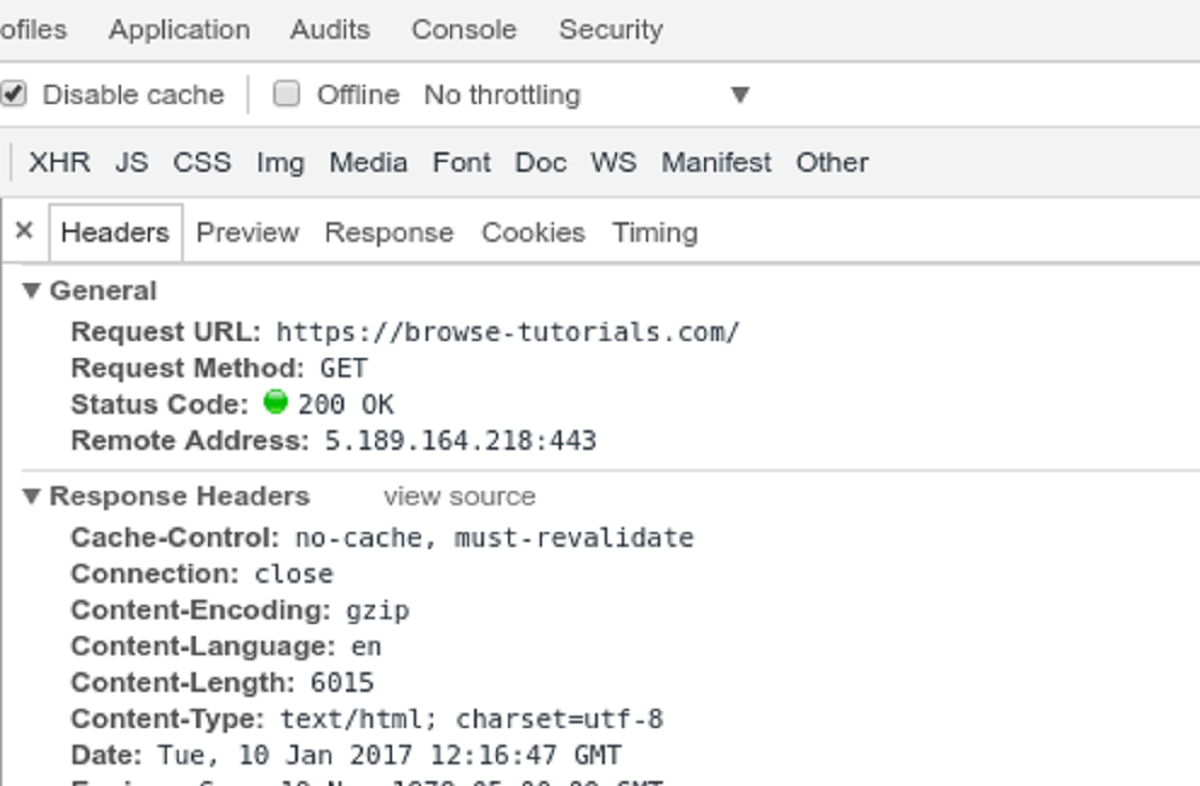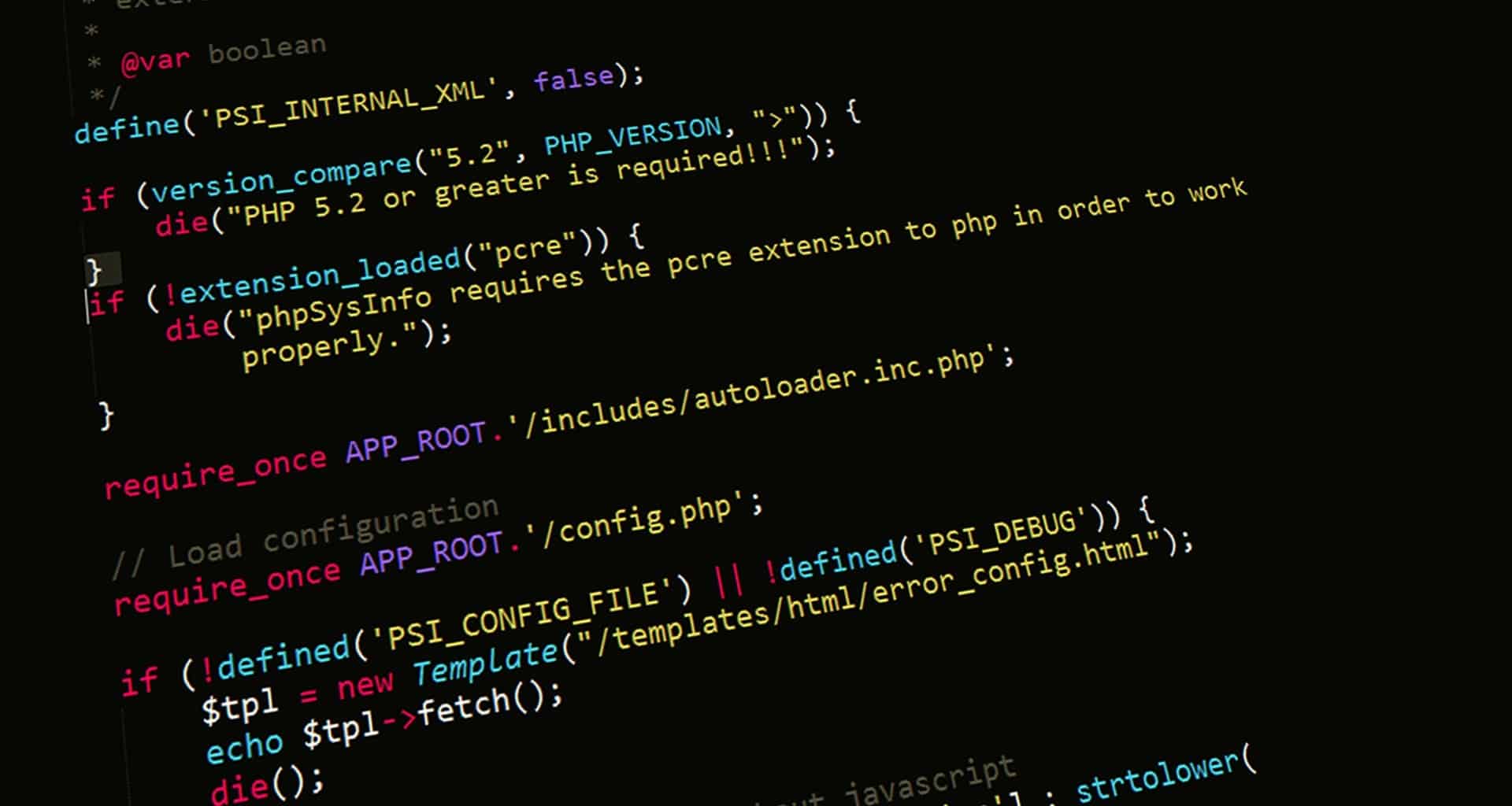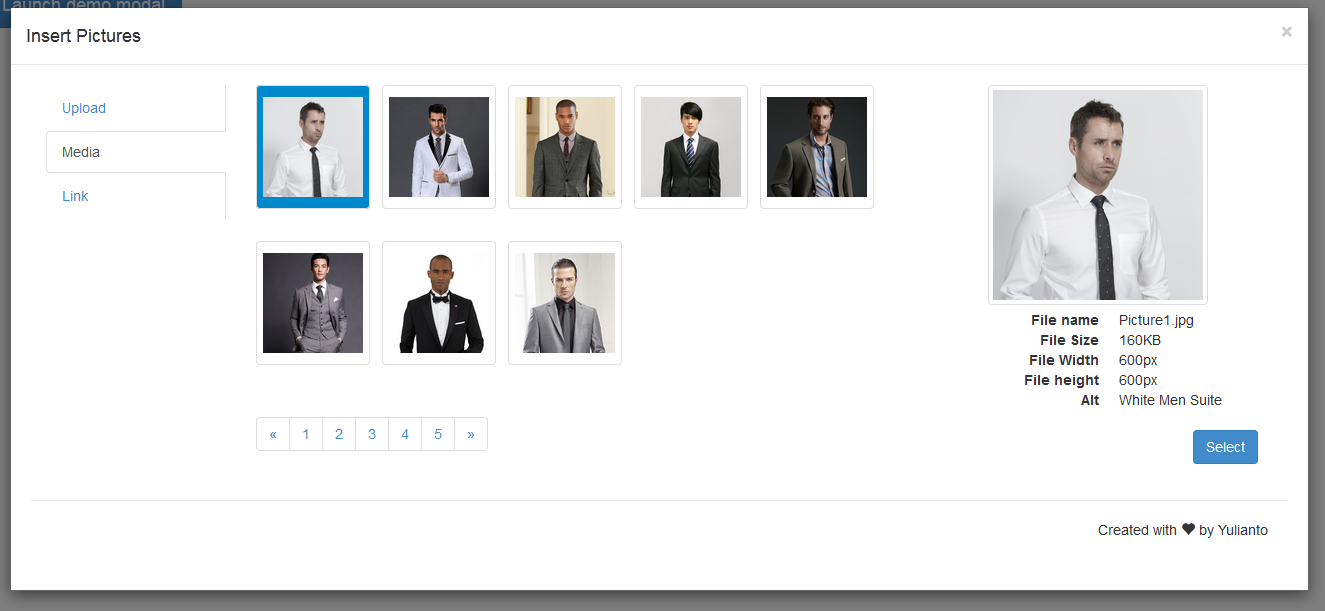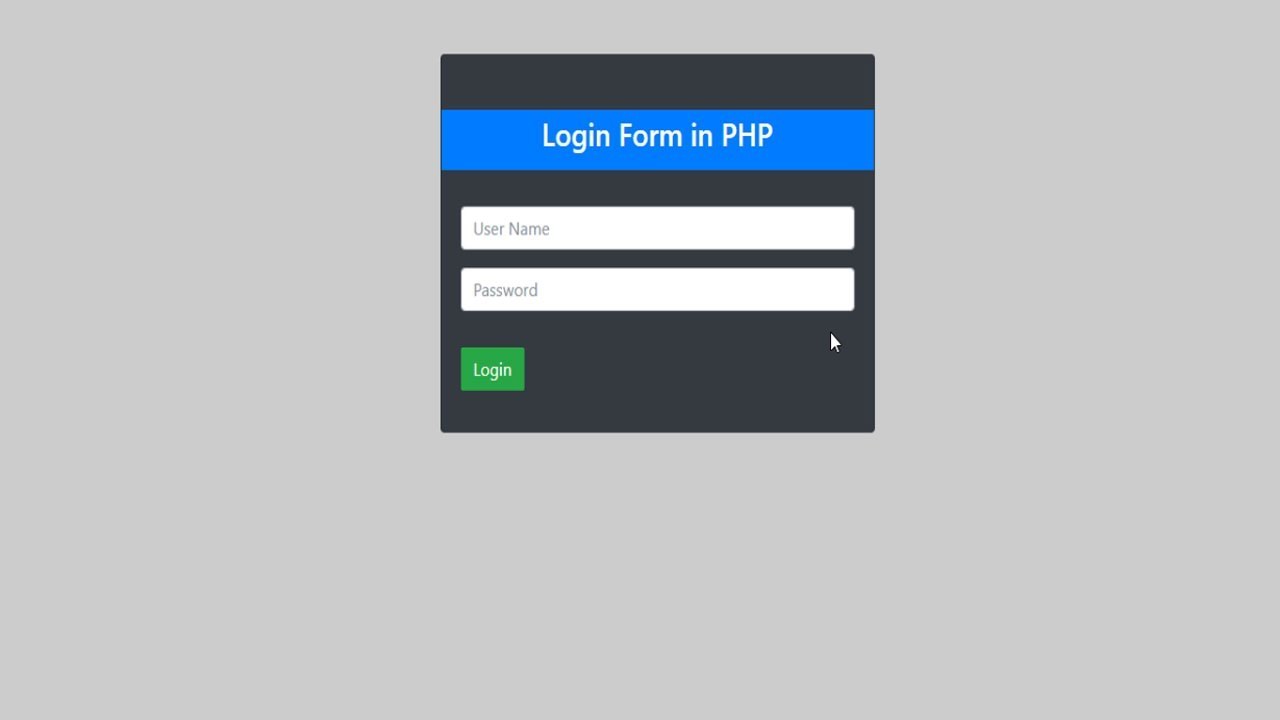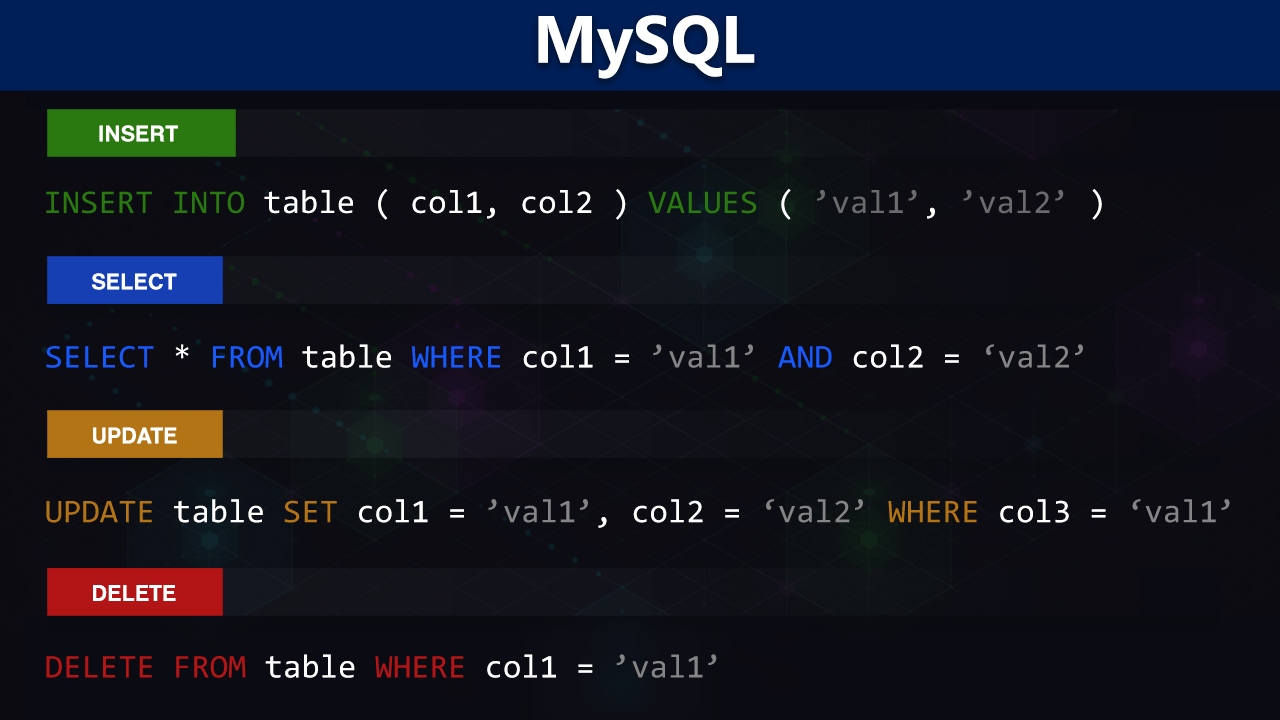Introduction
In today’s digital age, the internet plays a vital role in our everyday lives. Whether it’s for information, communication, or entertainment, we rely on websites and web services to fulfill our needs. As a developer, it’s crucial to ensure the validity and integrity of the URLs that users interact with. A URL (Uniform Resource Locator) is the address that specifies the location of a web resource, such as a webpage or an image.
Checking the validity of a URL is an essential step in website development, as it helps prevent errors and ensure the security and functionality of the application. By validating a URL, we can ensure that it is properly formatted and conforms to the standards set by the World Wide Web Consortium (W3C).
In this article, we will explore various methods in PHP to determine whether a URL is valid or not. We will cover techniques such as using the filter_var() function, regular expressions, and the get_headers() function. Each method has its own advantages, and the choice of method depends on the specific requirements of your project.
By the end of this article, you will have a clear understanding of how to validate URLs in PHP and be equipped with the knowledge to ensure the reliability of the URLs within your applications. So, let’s get started and dive into the different methods for checking URL validity in PHP.
Methods to check URL validity
When it comes to checking URL validity in PHP, there are several methods available. Each method has its own pros and cons, and the choice depends on the specific requirements of your project. Let’s explore three commonly used methods: using the filter_var() function, using regular expressions, and using the get_headers() function.
Using filter_var() function: The filter_var() function is a powerful tool in PHP that allows us to validate and sanitize different types of data. When it comes to validating URLs, we can use the FILTER_VALIDATE_URL filter provided by filter_var(). This filter checks whether a URL is correctly formatted or not and returns either true or false based on the validity. It ensures that the URL has the correct scheme, domain, and path structure.
Using regular expressions: Regular expressions provide a flexible way to match and validate patterns in strings. In PHP, we can use regular expressions to validate URLs by defining a pattern that matches the desired format. We can use functions such as preg_match() or preg_match_all() to check if a given URL matches the pattern. Regular expressions allow for more customizable validation rules, such as checking for specific domain names or excluding certain characters.
Using get_headers() function: The get_headers() function in PHP allows us to fetch the headers of a given URL. By examining the response headers, we can determine the validity of the URL. An invalid URL will often result in an error response or no response at all. If the get_headers() function returns an array of headers, it means the URL is valid. However, it’s important to note that this method relies on making an HTTP request, so it may not be as efficient as the other methods if you only need to validate the URL’s syntax.
These three methods provide different approaches to check URL validity in PHP. The choice of method depends on factors such as the level of validation required, performance considerations, and the complexity of the validation rules. Now that we have an understanding of the methods available, let’s move on to the next section, where we will explore how to implement these methods in PHP to check URL validity.
Using filter_var() function
The filter_var() function in PHP provides a straightforward and convenient way to validate URLs using the FILTER_VALIDATE_URL filter. This filter checks whether a URL is correctly formatted and returns either true or false based on the validity.
The syntax of the filter_var() function is as follows:
filter_var($url, FILTER_VALIDATE_URL);
To check the validity of a URL, simply pass the URL as the first parameter and the FILTER_VALIDATE_URL constant as the second parameter to the filter_var() function. If the URL is valid, the function will return true; otherwise, it will return false.
Let’s take a look at an example of checking URL validity using the filter_var() function:
$url = "https://www.example.com";
if (filter_var($url, FILTER_VALIDATE_URL)) {
echo "The URL is valid.";
} else {
echo "The URL is not valid.";
}
In this example, we define a URL and use the filter_var() function to check its validity. If the URL is valid, the message “The URL is valid” will be displayed; otherwise, the message “The URL is not valid” will be displayed.
The filter_var() function provides a simple and efficient way to validate URLs in PHP. It ensures that the URLs adhere to the correct syntax and structure defined by the World Wide Web Consortium (W3C). However, it’s important to note that the filter_var() function only checks for the syntax of the URL and does not guarantee the availability or functionality of the resource at that location. For a more comprehensive validation, you may need to consider additional methods, such as using regular expressions or checking the response headers using the get_headers() function.
Using regular expressions
Regular expressions provide a powerful and flexible way to validate URLs in PHP. By defining a pattern that matches the desired format of a URL, we can use functions like preg_match() or preg_match_all() to check if a given URL matches the pattern.
To use regular expressions for URL validation, we need to define a pattern that represents the structure of a valid URL. The pattern can include rules for the scheme, domain, path, query parameters, and fragment identifier. For example, the following regular expression pattern validates URLs with HTTP or HTTPS schemes:
$pattern = "/^(http|https):\/\/([a-zA-Z0-9_-]+\.)*[a-zA-Z0-9_-]+\.[a-zA-Z0-9_-]+(\/[a-zA-Z0-9_-]+)*$/";
In this pattern, /^(http|https):\/\// matches the scheme, ([a-zA-Z0-9_-]+\.)*[a-zA-Z0-9_-]+\.[a-zA-Z0-9_-]+ matches the domain, and (\/[a-zA-Z0-9_-]+)* matches the path. This is just a basic example, and you can customize the pattern according to your specific requirements.
Here’s an example of checking URL validity using regular expressions and the preg_match() function:
$url = "https://www.example.com";
$pattern = "/^(http|https):\/\/([a-zA-Z0-9_-]+\.)*[a-zA-Z0-9_-]+\.[a-zA-Z0-9_-]+(\/[a-zA-Z0-9_-]+)*$/";
if (preg_match($pattern, $url)) {
echo "The URL is valid.";
} else {
echo "The URL is not valid.";
}
In this example, we define a URL and a regular expression pattern. The preg_match() function is then used to check if the URL matches the pattern. If it does, the message “The URL is valid” is displayed; if not, the message “The URL is not valid” is displayed.
Using regular expressions for URL validation allows for more customizable rules. You can define patterns to check for specific domain names, exclude certain characters, or enforce additional restrictions. However, it’s important to be mindful of the complexity and performance implications of regular expressions, as they can become resource-intensive for complex patterns or large-scale validation processes.
Using get_headers() function
The get_headers() function in PHP allows us to fetch the headers of a given URL. By examining the response headers, we can determine the validity of the URL. An invalid URL will often result in an error response or no response at all. If the get_headers() function returns an array of headers, it means the URL is valid.
The syntax of the get_headers() function is as follows:
$headers = get_headers($url);
To check the validity of a URL using the get_headers() function, simply pass the URL as a parameter to the function. The function will then retrieve the headers of the URL and store them in the $headers variable.
Let’s take a look at an example of checking URL validity using the get_headers() function:
$url = "https://www.example.com";
$headers = get_headers($url);
if ($headers !== false) {
echo "The URL is valid.";
} else {
echo "The URL is not valid.";
}
In this example, we define a URL and use the get_headers() function to retrieve the headers of the URL. If the function returns an array of headers (i.e., not false), it means the URL is valid, and the message “The URL is valid” is displayed. If the function returns false, it means the URL is invalid, and the message “The URL is not valid” is displayed.
Using the get_headers() function for URL validation has the advantage of directly checking the availability and response status of the URL. However, it’s important to note that this method relies on making an HTTP request, so it may not be as efficient as the other methods if you only need to validate the URL’s syntax. Additionally, keep in mind that the function may return false for other reasons, such as network issues or server errors, so it’s important to handle such cases appropriately in your code.
Checking URL validity in PHP
Validating URLs in PHP is an essential step in ensuring the reliability and security of web applications. By checking the validity of a URL, we can prevent errors, enhance user experience, and safeguard against potential security risks.
In this article, we have explored three popular methods for checking URL validity in PHP: using the filter_var() function, using regular expressions, and using the get_headers() function. Each method offers its own advantages and can be used based on the specific requirements of your project.
Using the filter_var() function allows for a straightforward and convenient way to validate URLs. By using the FILTER_VALIDATE_URL filter, we can check if a URL is correctly formatted. However, this method only checks for syntax and does not guarantee the availability or functionality of the resource.
Regular expressions provide a powerful and customizable approach to URL validation. By defining a pattern that represents the desired format, we can use functions like preg_match() to check if a URL matches the pattern. Regular expressions allow for more advanced validation rules, such as specific domain names or character restrictions.
The get_headers() function offers a way to check URL validity by examining the response headers. If the function returns an array of headers, it indicates that the URL is valid. This method directly checks the availability and response status of the URL but relies on making an HTTP request.
To ensure robust URL validation, consider combining different methods or implementing additional checks, such as verifying the protocol, handling redirects, or considering URL fragments and query parameters. Additionally, error handling and sanitization of user input are crucial to prevent security vulnerabilities.
By utilizing the appropriate URL validation method in your PHP code, you can enhance the reliability, security, and overall performance of your web applications. Now that you have a solid understanding of the different methods available, you can confidently validate URLs and deliver a seamless browsing experience for your users.
Syntax of filter_var() function
The filter_var() function in PHP is a powerful tool for validating and sanitizing different types of data, including URLs. The syntax of the filter_var() function when used for URL validation is as follows:
filter_var($url, FILTER_VALIDATE_URL);
In this syntax, $url represents the URL that we want to validate, and FILTER_VALIDATE_URL is a constant that tells the filter_var() function to use the URL validation filter. This filter checks whether the provided URL is correctly formatted and returns either true or false based on its validity.
To check the validity of a URL, simply pass the URL and the FILTER_VALIDATE_URL constant as the parameters to the filter_var() function. The function will then analyze the provided URL and return true if it is valid, or false if it is not.
It’s important to note that the filter_var() function only validates the syntax of the URL and does not guarantee the availability or functionality of the resource at that location. It ensures that the URL has the correct scheme (e.g., “http://” or “https://”), domain, and path structure according to the W3C standards.
To perform more comprehensive URL validations, additional checks can be implemented. These checks might include verifying the existence of the domain, managing redirects, or inspecting URL fragments and query parameters.
By utilizing the filter_var() function with the FILTER_VALIDATE_URL filter, you can efficiently validate URLs in PHP and ensure that they adhere to the correct syntax. This can enhance the reliability and security of your web applications, as well as improve the overall user experience by minimizing errors.
Example of checking URL validity using filter_var() function
Now, let’s walk through an example that demonstrates how to use the filter_var() function to check the validity of a URL in PHP.
Suppose we have a variable named $url that contains the URL we want to validate. We can use the filter_var() function with the FILTER_VALIDATE_URL filter to check if the URL is valid. Let’s take a look at the code snippet below:
$url = "https://www.example.com";
if (filter_var($url, FILTER_VALIDATE_URL)) {
echo "The URL is valid.";
} else {
echo "The URL is not valid.";
}
In this example, we assign the URL “https://www.example.com” to the $url variable. We then use the filter_var() function to check the validity of the URL. If the URL is valid, the message “The URL is valid” will be displayed. However, if the URL is not valid, the message “The URL is not valid” will be displayed instead.
By utilizing the FILTER_VALIDATE_URL filter, the filter_var() function checks if the URL has the correct scheme, domain, and path structure according to the W3C standards. It returns true if the URL is valid and false if it is not.
Keep in mind that the filter_var() function only validates the syntax of the URL and does not guarantee the availability or functionality of the resource at that location. Therefore, it’s essential to handle exceptions and errors appropriately when working with URLs in your PHP code.
By incorporating this example into your PHP applications, you can easily validate URLs and ensure that they adhere to the correct syntax. This can help prevent errors and improve the overall reliability and security of your web applications.
Syntax of regular expressions
Regular expressions provide a powerful way to validate URLs in PHP by defining a pattern that matches the desired format. The syntax of regular expressions when used for URL validation consists of various components that collectively form the pattern.
To create a regular expression pattern for URL validation, you can use special characters, character classes, quantifiers, and anchors. Here’s an example of a basic regular expression pattern for validating URLs:
$pattern = "/^(http|https):\/\/([a-zA-Z0-9_-]+\.)*[a-zA-Z0-9_-]+\.[a-zA-Z0-9_-]+(\/[a-zA-Z0-9_-]+)*$/";
In this pattern, the delimiters (“/”) enclose the regular expression. The “^” symbol at the beginning indicates the start of the string, and the “$” symbol at the end denotes the end of the string. The parentheses “()” group components together, and the backslash “\” is used to escape special characters.
Inside the pattern, “^(http|https):\/\/” matches the scheme, ensuring that it starts with either “http://” or “https://”. “([a-zA-Z0-9_-]+\.)*” matches the subdomains, “[a-zA-Z0-9_-]+\.[a-zA-Z0-9_-]+” matches the domain, and “(\/[a-zA-Z0-9_-]+)*” matches the path.
You can customize the regular expression pattern based on your specific URL validation requirements. For example, you can add additional checks for specific domain names, restrict certain characters, or enforce constraints on query parameters or URL fragments.
After defining the regular expression pattern, you can use PHP’s preg_match() or preg_match_all() function to check if a given URL matches the pattern. If there is a match, the functions return true; otherwise, they return false.
When working with regular expressions, keep in mind that they can be resource-intensive for complex patterns or large-scale validation processes. Therefore, it’s important to consider the efficiency and performance implications of your regular expression patterns, especially if you are validating a significant volume of URLs.
By understanding the syntax of regular expressions, you can create powerful patterns to validate URLs in PHP that meet your specific requirements. This allows you to ensure that URLs adhere to the desired format, enhancing the reliability and security of your web applications.
Example of checking URL validity using regular expressions
Let’s dive into an example that demonstrates how to use regular expressions to check the validity of a URL in PHP. We’ll define a regular expression pattern that matches the desired URL format and use the preg_match() function to check if a given URL matches the pattern. Here’s an example code snippet:
$url = "https://www.example.com";
$pattern = "/^(http|https):\/\/([a-zA-Z0-9_-]+\.)*[a-zA-Z0-9_-]+\.[a-zA-Z0-9_-]+(\/[a-zA-Z0-9_-]+)*$/";
if (preg_match($pattern, $url)) {
echo "The URL is valid.";
} else {
echo "The URL is not valid.";
}
In this example, we define a URL as “https://www.example.com” and create a regular expression pattern to validate it. The pattern matches URLs that start with either “http://” or “https://”, followed by subdomains (optional), a domain name, and a path (optional). The preg_match() function is then used to check if the URL matches the pattern.
If the preg_match() function returns a match (i.e., a truthy value), it indicates that the URL is valid, and the output will be “The URL is valid.” Otherwise, if the function returns no match (i.e., false), it means the URL is not valid, and the output will be “The URL is not valid.”
Regular expressions provide a powerful and customizable way to validate URLs, allowing you to define complex rules and constraints based on your specific requirements. However, it’s important to consider the performance implications of regular expressions, especially for large-scale validation processes or patterns with high complexity.
By incorporating regular expressions into your URL validation logic in PHP, you can effectively ensure that URLs adhere to the desired format, enhancing the reliability and security of your web applications.
Syntax of get_headers() function
The get_headers() function in PHP provides a convenient way to retrieve the headers of a given URL. By examining the response headers, we can determine the validity of the URL. The syntax of the get_headers() function when used for checking URL validity is as follows:
$headers = get_headers($url);
In this syntax, $url represents the URL that we want to check, and the get_headers() function retrieves the headers of that URL and assigns them to the $headers variable.
To check the validity of a URL using the get_headers() function, you simply pass the URL as a parameter to the function. The function will then make an HTTP request to the URL to fetch the headers and store them in the $headers variable.
After calling the get_headers() function, you can examine the response headers to determine whether the URL is valid or not. If the function returns an array of headers, it indicates that the URL is valid. On the other hand, if the function returns false, it means that there was an error fetching the headers and the URL may not be valid or accessible.
It’s important to note that the get_headers() function relies on making an HTTP request, so it may not be as efficient as other methods if you only need to validate the URL’s syntax. Additionally, the function’s behavior can be affected by factors such as network connectivity and server response times, so proper error handling is necessary to handle unexpected scenarios.
By using the get_headers() function and examining the retrieved headers, you can determine the validity of a URL in PHP. This method allows for direct checking of the availability and response status of the URL, providing a more comprehensive validation approach beyond just syntax checking.
Example of checking URL validity using get_headers() function
Let’s explore an example that demonstrates how to use the get_headers() function to check the validity of a URL in PHP. By examining the response headers, we can determine if the URL is valid or not. Here’s an example code snippet:
$url = "https://www.example.com";
$headers = get_headers($url);
if ($headers !== false) {
echo "The URL is valid.";
} else {
echo "The URL is not valid.";
}
In this example, we have a URL defined as “https://www.example.com”. We use the get_headers() function to retrieve the headers of the URL and store them in the $headers variable. If the get_headers() function returns an array of headers (i.e., not false), it indicates that the URL is valid, and the message “The URL is valid” is displayed. However, if the function returns false, it means there was an error fetching the headers, and the message “The URL is not valid” is displayed instead.
By using the get_headers() function, we directly check the availability and response status of the URL. If the function returns headers, it implies that the URL is valid and exists. However, it’s important to handle exceptions and errors appropriately since the function’s behavior can be affected by factors such as network connectivity and server response times.
The get_headers() function can be a powerful tool for checking URL validity, as it goes beyond merely validating the syntax. It allows you to determine if the URL is accessible and functional, providing a more comprehensive validation approach for your PHP applications.
By incorporating this example into your code, you can effectively validate URLs using the get_headers() function and ensure the reliability and integrity of the resources accessed by your web applications.
Conclusion
Validating URLs is an essential aspect of web development in PHP. By ensuring the validity of URLs, we can enhance the reliability, security, and functionality of our web applications. In this article, we explored different methods for checking URL validity: using the filter_var() function, regular expressions, and the get_headers() function.
The filter_var() function provides a straightforward way to validate URLs by checking their syntax, while regular expressions offer more customizable and complex validation rules. On the other hand, the get_headers() function allows for direct checking of URL availability and response status.
When working with URLs, it’s crucial to consider the specific requirements of your project and choose the most appropriate method for validation. You may even choose to combine multiple methods to achieve comprehensive URL validation.
Remember that URL validation goes beyond just syntax checking. It’s important to handle exceptions, account for network issues, and consider additional checks like domain existence and handling redirects or query parameters.
By implementing URL validation effectively, we can ensure that our web applications work with valid and secure URLs, avoiding issues such as broken links, invalid redirections, or potential security vulnerabilities.
Whether you’re validating user-submitted URLs, performing data scraping, or building an API, the knowledge and understanding gained from this article will empower you to handle URL validation with confidence in your PHP projects.







